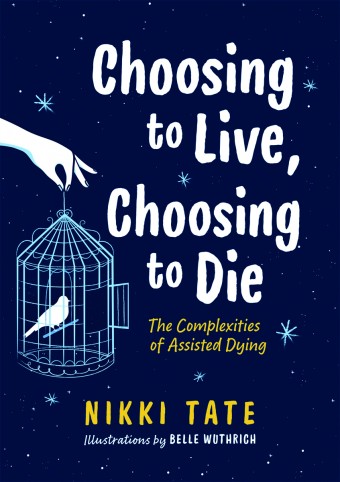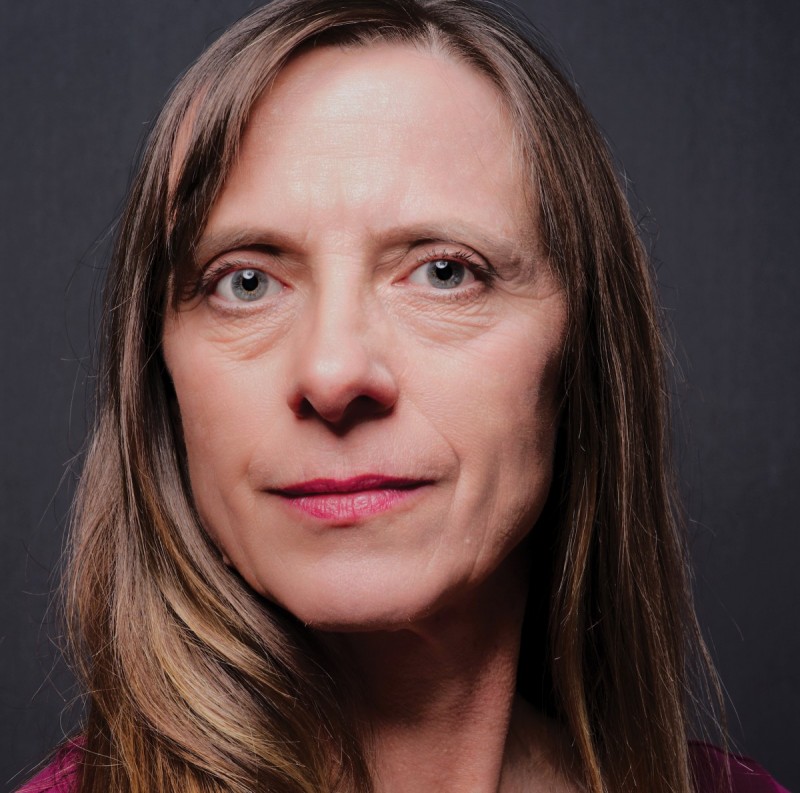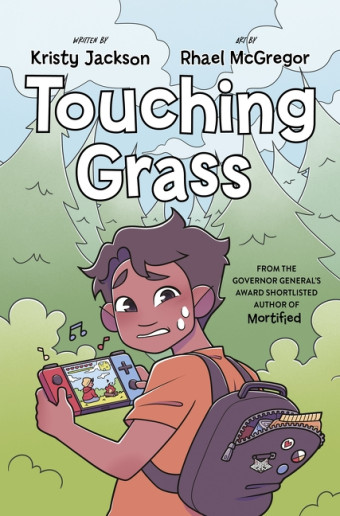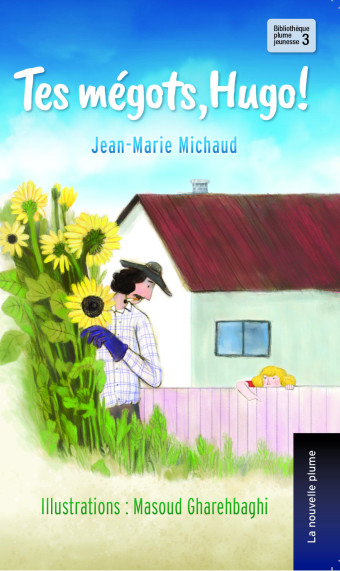Some teenagers haven’t had a lot of experience when it comes to death and dying. However, like everyone, they eventually will, and broaching the sensitive and complex issues surrounding assisted dying can help prepare young people for the future.

- Choosing to Live, Choosing to Die
- Nikki Tate, Belle Wuthrich (Illustrator)
- Orca Book Publishers
- $19.95 Paperback, 176 pages
- ISBN: 978-14-59818-89-7
Choosing to Live, Choosing to Die: The Complexities of Assisted Dying is a book for young readers that examines assisted death from multiple perspectives and encourages them to come to their own conclusions.
“There must always be room for respectful conversation no matter what one believes,” Canmore-based author Nikki Tate says.
“I hope readers come away understanding that I’m not suggesting there is any one way that is more right than any other when it comes to thinking about medical assistance in dying. Each of us is unique in life, and we all have our own choices to make when approaching death as well.”
A difficult subject to tackle for any age group, death affects everyone sooner or later.
“The time to talk about end-of-life decisions comes well before the time of crisis when a loved one may be suffering. I hope the book helps people of all ages find a way to enter into open, kind, and thoughtful discussions,” Tate says.
Tate was a teenager when she first experienced the suffering and death of her grandmother, and years later when her mother died, Tate’s daughter was a teen. So she sees the value in targeting a younger audience.

“Teenagers are bright, aware of big issues, curious, and beginning to look at the world from their own unique points of view (which may or may not align with views held by their families). In many ways, they are the perfect audience for a book like this,” Tate says.
“My hope is that the book will provide food for thought for curious teens and, ideally, act as a catalyst for conversation among family members (or, in the classroom).”
Tate says that the book was “emotionally draining” to research, because it caused her to face some of her decisions head-on from when her mother was ill.
She read books, scholarly journals, and personal accounts; watched and listened to documentaries; and spoke with medical professionals, people involved in hospice care, and members of her own family.
“I had many conversations about end-of-life issues and the sometimes difficult choices people and their families must make when facing the final stage of life,” she says.
“I think I began the project (in part) hoping to find definitive answers and discovered that this is an ongoing and nuanced conversation where answers are often elusive.”
And, Tate continues, even if a topic is difficult to process, “that doesn’t mean that we should shy away from dilemmas that may be challenging or stories that may be sad. Life is like that, sometimes – difficult, challenging, and sad.”
Indeed, having a better grasp about the end of life may help one to have a better understanding of life itself.
“I believe,” Tate says, “that in coming to understand more about death and dying, we can better embrace and fully engage in the lives we are lucky enough to be living.”












